Hover over a project for more details.
Current projects
 ATARD
ATARDAir Transport and Regional Development
Summary: The air transport sector is a major contributor to the globalization of the economy. Its growth was accompanied and to a certain extent caused by liberalization. The growth in traffic levels has led to congestion, at both major airports and in airspace, and to a lack of service on thin routes, thus mainly affecting core regions and remote regions. This Action investigates the relationship between air transport and regional development. The benefits that may be derived from it are both scientific and societal in nature. They include a better understanding of that relationship focusing on Europe; policy recommendations on how air transport infrastructure and service improvements should be made in order to support economic competitiveness and social cohesion; and the constitution of a network of researchers dedicated to air transport and its economic, social and environmental implications aligned with Europe 2020 strategy.
Members of DEVI: Estelle Malavolti
Partners:
Duration (start date – end date): 5 ans (mars 2015 – mars 2020)
 MEMOIRE
MEMOIREConception d’outils d’analyse des cartes cognitives chez des sujets agés sains ou prédéments de la maladie d’Alzheimer
Summary: La carte cognitive est une représentation mentale de l’environnement spatial. 3777 sujets âgés issus d’une étude en population générale ont passé une tâche d’évocation lexicale consistant à produire le plus de noms de ville possible en une minute. Ils ont été suivis longitudinalement pendant 22 ans et certains ont développé une démence de type Alzheimer. L’analyse de la production des noms de ville chez ces sujets fournit ainsi une occasion exceptionnelle d’étudier la représentation spatiale de l’espace géographique français chez des personnes âgées (dans une étude transversale) et avant l’entrée dans la démence (dans une étude longitudinale).
L’objectif général de ce projet est de permettre l’analyse de ces données en levant des verrous scientifiques liés au couplage informatisé des données recueillies avec des bases de données géographiques afin d’extraire différentes variables dépendantes. Ce projet réunit des chercheurs issus de quatre laboratoires différents dans une grande interdisciplinarité: neuroscience, perception et cognition, traitement d’informations, interaction homme machine.
L’objectif général de ce projet est de permettre l’analyse de ces données en levant des verrous scientifiques liés au couplage informatisé des données recueillies avec des bases de données géographiques afin d’extraire différentes variables dépendantes. Ce projet réunit des chercheurs issus de quatre laboratoires différents dans une grande interdisciplinarité: neuroscience, perception et cognition, traitement d’informations, interaction homme machine.
Members of DEVI: Christophe Hurter (chef de projet), Antoine Lhuiller
Partners: Christophe Jouffrais (IRIT, équipe ELIPSE), Emmanuel Barbeau (CerCo, équipe Perception et reconnaissance de l’objet et de la scène), Hélène Amiéva (Inserm, équipe Epidémiologie et Neuropsychologie du vieillissement)
Duration (start date – end date):
 NUMERIS
NUMERISOptimisation de l’apprentissage et de l’exploitation des interfaces numériques chez le pilote (Glass cockpits) et le contrôleur aérien (Striping électronique)
Summary: Le monde du numérique et de la virtualisation a déjà envahi les environnements de travail. Dans le domaine aéronautique, les contrôleurs aériens utilisent de moins en moins les outils traditionnels papier et crayon au profit de métaphores électroniques. Dans les cockpits, les instruments analogiques ont quasiment disparu et sont remplacés par des interfaces numériques. Initialement élaborés pour réduire la charge de travail des opérateurs et augmenter leur conscience de l’environnement (i.e. Situational Awareness), ces systèmes et ces interfaces proposent toujours plus de menus, plus de fonctionnalités, plus d’informations à traiter, et ainsi, elles ont profondément modifié le rôle et les méthodes de travail des opérateurs.
Ce projet vise à étudier l’impact de l’apparition du “tout numérique” dans le processus de formation. Le but recherché est l’optimisation de l’apprentissage et détecter comment l’insertion des outils numériques va favoriser ou pénaliser la formation aux métiers aéronautiques dans les domaines du pilotage et du contrôle aérien.
Pour s’attaquer à ces problématiques, cette thèse propose une approche pluridisciplinaire avec, d’une part, une composante liée aux facteurs humains (étude de l’activité, charge cognitive, étude du comportement), et d’autre part, avec une composante forte liée à l’informatique centrée sur la capture et l’exploitation des données issues du comportement. Les données comportementales vont être recueillies à l’aide de capteurs comme la conductance dermique, le rythme cardiaque ou l’eye tracking. La masse de données générées par ces dispositifs (Big Data) nécessite aujourd’hui d’explorer de nouvelles voies d’analyse, de traitement et d’exploitation à travers le développement d’outils innovants (InfoVis). La formation de l’opérateur ab initio (pilote et/ou contrôleur) sera le support de ces travaux de thèse.
Ce projet vise à étudier l’impact de l’apparition du “tout numérique” dans le processus de formation. Le but recherché est l’optimisation de l’apprentissage et détecter comment l’insertion des outils numériques va favoriser ou pénaliser la formation aux métiers aéronautiques dans les domaines du pilotage et du contrôle aérien.
Pour s’attaquer à ces problématiques, cette thèse propose une approche pluridisciplinaire avec, d’une part, une composante liée aux facteurs humains (étude de l’activité, charge cognitive, étude du comportement), et d’autre part, avec une composante forte liée à l’informatique centrée sur la capture et l’exploitation des données issues du comportement. Les données comportementales vont être recueillies à l’aide de capteurs comme la conductance dermique, le rythme cardiaque ou l’eye tracking. La masse de données générées par ces dispositifs (Big Data) nécessite aujourd’hui d’explorer de nouvelles voies d’analyse, de traitement et d’exploitation à travers le développement d’outils innovants (InfoVis). La formation de l’opérateur ab initio (pilote et/ou contrôleur) sera le support de ces travaux de thèse.
Members of DEVI: Christophe Hurter (chef de projet), Emilien Dubois
Partners: Centre de Recherche de l’Armée de l’Air
Duration (start date – end date):
 PIPAA
PIPAAPile à combustible pour applications aéronautiques
Summary: Ce projet vise à développer et qualifier un système de pile à combustible pour l’alimentation électrique de systèmes d’avions, notamment les solutions de taxiage électrique au sol, afin de réduire drastiquement les émissions polluantes sur les aéroports. Ce projet, représentant un investissement total de 51,6 M€ sur cinq ans, est financé à hauteur de 19,3 M€ par le Programme d’investissements d’avenir piloté par le Commissariat général à l’investissement (CGI) et opéré par Bpifrance, dans le cadre de l’initiative Projets de R&D structurants pour la compétitivité. Des expérimentations sont prévues avec la compagnie aérienne Easyjet sur l’aéroport de Toulouse Blagnac. Dans ce projet, l’ENAC apporte sa connaissance scientifique et opérationnelle dans l’étude des impacts sécuritaires de ce système, mais aussi des changements potentiels de stratégies d’un aéroport ou de compagnies aériennes suite à possibilité de développement de nouveaux services liés à l’introduction de l’hydrogène sur la plateforme aéroportuaire. L’ENAC s’appuie également sur sa plateforme de simulation ACHIL pour estimer les impacts opérationnels et environnementaux de l’introduction d’une solution de taxiage électrique alimentée hydrogène. Tronico, Ad Venta, le Commissariat à l’Energie Atomique et aux énergies alternatives (CEA) et l’Institut National Polytechnique de Toulouse (INPT) font également partie des partenaires pour le développement de la pile à combustible qui devrait être prête pour des opérations commerciales à l’horizon 2019-2020.
Members of DEVI: Ludovic d’Estampes, Estelle Malavolti, Nathalie Lenoir
Members of ENAC: Mathieu Cousy, Jorg Guesnet, Isabelle Laplace (chef de projet)
Partners: Safran Power Units, Tronico, Ad Venta, Commissariat à l’Energie Atomique et aux énergies alternatives, Institut National Polytechnique de Toulouse
Duration (start date – end date): 4 ans (janvier 2018 – décembre 2021)
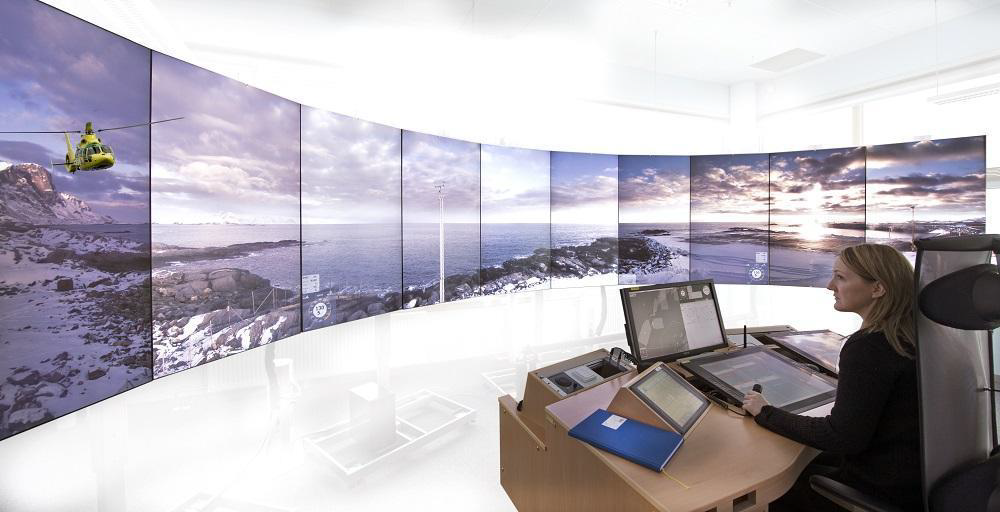 Remote Tower
Remote TowerAir Traffic Controller activities in remote towers: prospective study and optimizations
Summary: In France, there are many small airports. For these airports, it is more and more difficult to have air traffic controllers monitoring the traffic, and pilot’s self-management rules often apply. In order to improve safety and regulate traffic better, many European country are in process of developing remote tower management processes. The principle driving these developments is that the person monitoring and controlling the traffic does not have to be located in the tower, but rather work at alternative remote site. Such new systems are supposed to allow operators to monitor traffic in small airports by displaying information from cameras, radar screens and radio transmissions in such a way that operators see receive information as they would in an airport tower. The purpose is not to develop a remote tower system, but to focus on the tools required in such situation and to assess their efficiency. We investigate new interaction techniques to support the emerging field of remote tower management. This research will be carried out in two phases. First, we will implement the efficient visualization and interactive systems to support remote activity. Second, we will provide tools and methods to assess the efficiency of developed visualization and interaction techniques. During this project, one PhD student (36 months) will investigate innovative interaction paradigms to support the air traffic controller activities required to manage remote tower. One research engineer (18 months) will provide technical and scientific support to develop and integrate the necessary sensors and tools into an existing simulation room at ENAC (Ecole Nationale de l’Aviation Civile).
Members of DEVI: Christophe Hurter (chef de projet), Almoctar Haiz
Partners:
Duration (start date – end date):
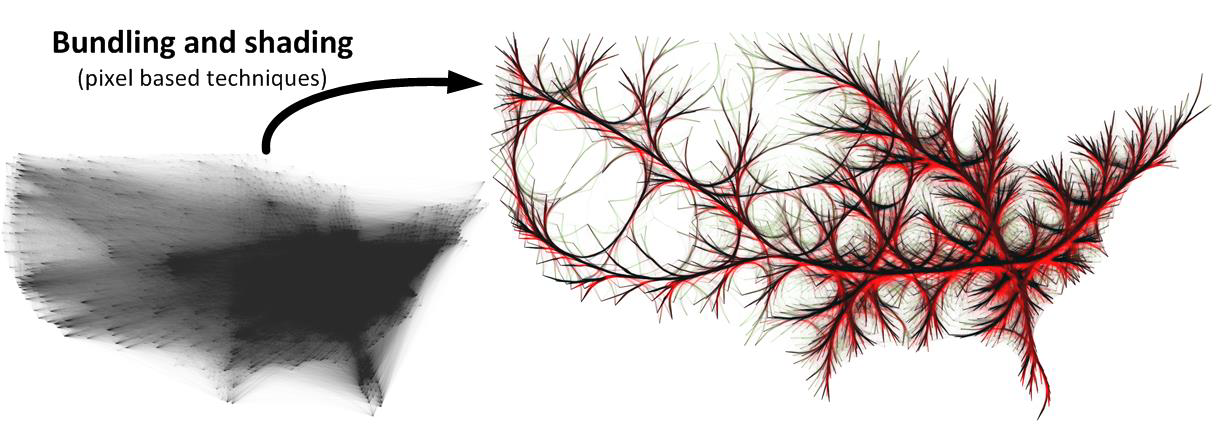 TERANoVA
TERANoVATemporal Exploration with Raster Algorithm as Novel Visualization Algorithms
Link to the website
Summary: Analyzing massive and complex datasets is essential to making new discoveries and creating benefits for people, but it remains a very difficult task. The key to supporting this task is not only to visualize data, but also to allow users to interact with the data. This is particularly important for movement data, such as traffic data on roads or in airspaces, because of their intrinsic time-dependent nature. The goal of TERANoVA is to explore new computing techniques called pixel-based algorithms so as to support efficient interactive visualizations for the exploration of large datasets of time-dependent data. This basic research project, at the crossroads of Information Visualization, Visual Analytics, Computer Graphics and Human Computer Interaction, will contribute to the development of solutions for making big data a tool for everybody.
Members of DEVI: Christophe Hurter (chef de projet), Michael Traoré
Partners:
Duration (start date – end date):
Completed projects
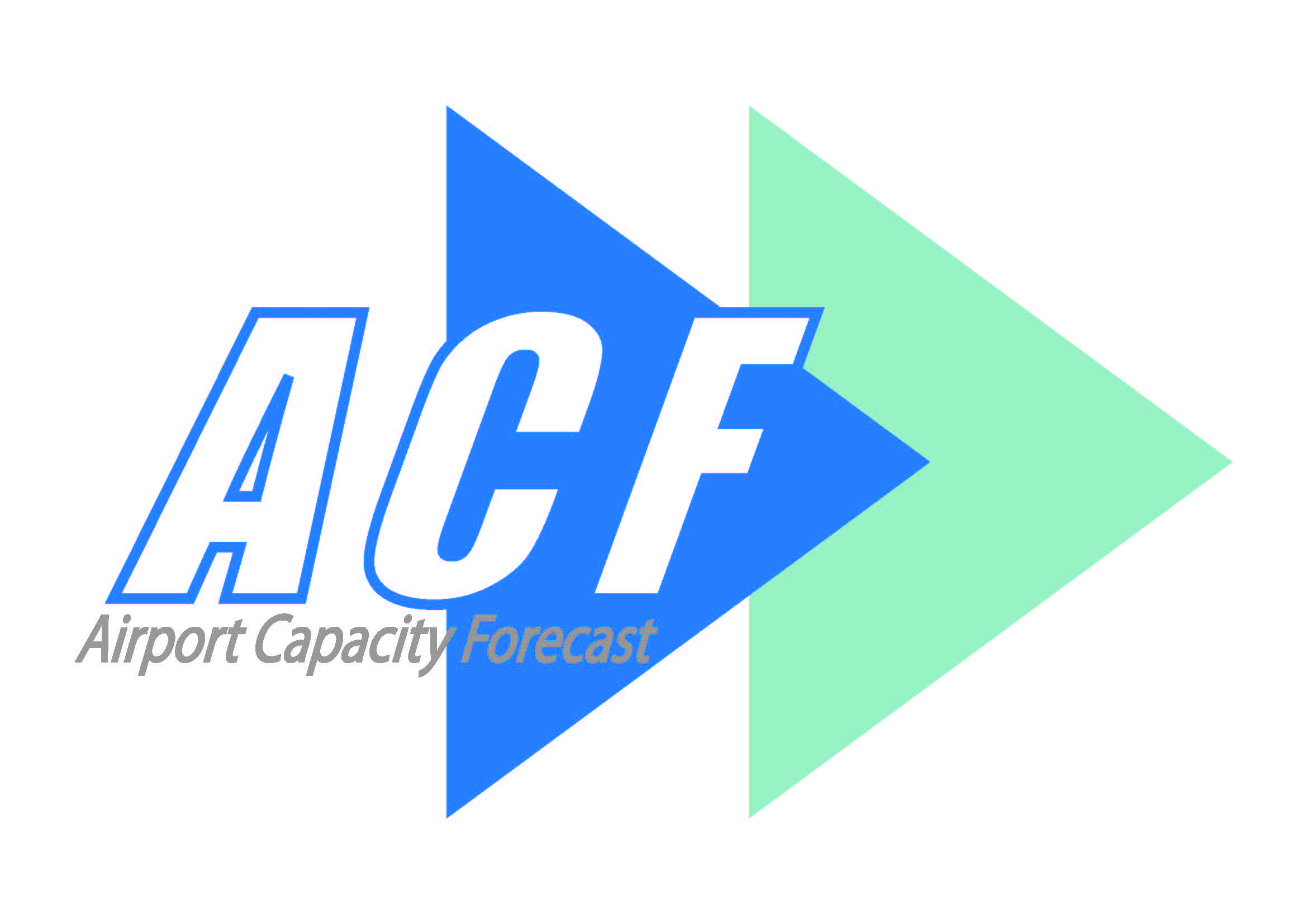 ACF
ACFAirport Capacity Forecast
Summary: The Airport Capacity Forecast (ACF) project will investigate the use of forecast information on airport capacity, which will allow airport stakeholders to optimize the use of their resources. ACF is carried out by a consortium of three: NLR in the Netherlands, GESAC in Italy and ENAC in France. ACF is funded under the SESAR WP-E (Long Term and Innovative Research) program, managed by EUROCONTROL.
The ACF project will cover airport airside and airport landside elements and will provide airport capacity predictions for a certain period ahead. The forward horizon will depend on the available information and the corresponding timing; typically ACF aims at a time horizon of one hour to two days as this time frame will allow sufficient accuracy of the predictions to provide sufficient quality increase for coordination and planning.
The ACF project will cover airport airside and airport landside elements and will provide airport capacity predictions for a certain period ahead. The forward horizon will depend on the available information and the corresponding timing; typically ACF aims at a time horizon of one hour to two days as this time frame will allow sufficient accuracy of the predictions to provide sufficient quality increase for coordination and planning.
Members of DEVI: Ludovic d’Estampes (chef de projet), Pascal Lezaud
Members of ENAC: Stéphane Catteau
Duration (start date – end date): 2 years (April 2013 – May 2015)
 ASEAN
ASEANImpact of the air traffic liberalization in ASEAN
Summary: The ASEAN Member States have decided to sign agreements which define the milestones for liberalization of air transport in the region. While not all of the countries have reached the same level of ratification, they however have all made steps towards greater liberalization. The main issues then concern, the impact of these agreements on each country’s economy and the region.
In this report, we study the impact of the MAAS and MALFPAS agreements on the economic development and the organisation of the air transport activity in six of the 10 ASEAN Member States: Cambodia, Indonesia, Lao PDR, Myanmar, the Philippines and Vietnam. Following our analysis, we make some recommendations, on liberalization up to the 5th freedom and also consider some implications should full liberalization be implemented.
In this report, we study the impact of the MAAS and MALFPAS agreements on the economic development and the organisation of the air transport activity in six of the 10 ASEAN Member States: Cambodia, Indonesia, Lao PDR, Myanmar, the Philippines and Vietnam. Following our analysis, we make some recommendations, on liberalization up to the 5th freedom and also consider some implications should full liberalization be implemented.
Members of DEVI: Nathalie Lenoir, Estelle Malavolti, Chantal Roucolle
Members of ENAC: Isabelle Laplace
Partners:
Duration (start date – end date):
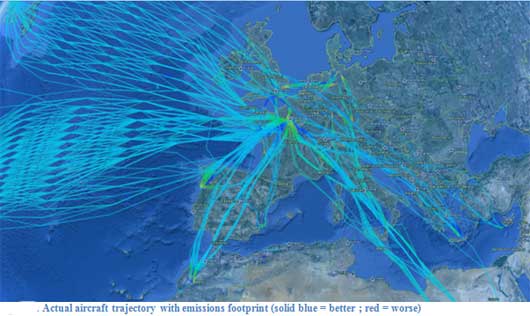 CARING
CARINGContribution of Airlines for the Reduction of Industry Nuisances and Gases
Summary: With a budget of one million euros, CARING (Contribution of Airlines for the Reduction of Industry Nuisances and Gases) is the only Clean Sky project involving airlines. Launched at the beginning of 2010, the project aims to understand how current and future environmental regulations affect the economics of airlines and to examine how airlines can best adapt to these changes. The project also seeks to understand the environmental impact of flight trajectories with the aim of reducing aircraft emissions and noise through innovations in flight management.
Led by OpenAirlines, a consulting and software company,CARING has analyzed thousands of commercial flights operated by six airlines, including Airlinair, TUI and Transavia, and spanning 11 types of aircraft. The CARING consortium used this unique flight data to explain how external factors such as trajectories and aircraft settings, including engine thrust and wing configuration, affect aircraft fuel consumption, emissions and noise. Partner airlines in the CARING project are already implementing changes to their operations that will produce a direct reduction in emissions of between two and three percent, with the equivalent fuel savings.
In the future, CARING’s research will be used in the development of flight management computers to choose optimal flight trajectories for reducing emissions. The first new flight management system delivering green trajectories based on CARING’s analysis has been demonstrated in 2014. The new economic model and application of operational best practices, meanwhile, has been delivered at the end of 2012.
Led by OpenAirlines, a consulting and software company,CARING has analyzed thousands of commercial flights operated by six airlines, including Airlinair, TUI and Transavia, and spanning 11 types of aircraft. The CARING consortium used this unique flight data to explain how external factors such as trajectories and aircraft settings, including engine thrust and wing configuration, affect aircraft fuel consumption, emissions and noise. Partner airlines in the CARING project are already implementing changes to their operations that will produce a direct reduction in emissions of between two and three percent, with the equivalent fuel savings.
In the future, CARING’s research will be used in the development of flight management computers to choose optimal flight trajectories for reducing emissions. The first new flight management system delivering green trajectories based on CARING’s analysis has been demonstrated in 2014. The new economic model and application of operational best practices, meanwhile, has been delivered at the end of 2012.
Members of DEVI: Estelle Malavolti
Partners:
Duration (start date – end date):
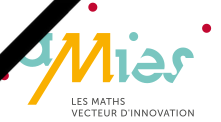 DOFIN
DOFINGéométrie de l’information et espaces de courbes pour l’analyse de données de sécurité aéronautiques
Summary: Les données de sécurité aéronautiques sont actuellement majoritairement exploitées de façon manuelle et très partielle. Le projet vise à initier une collaboration entre l’entreprise Safety Line et l’ex-laboratoire MAIAA de l’École Nationale de l’Aviation Civile (ENAC) afin de permettre un développement d’outils d’analyse automatiques des données disponibles et ce à l’aide des avancées récentes dans le domaine des statistiques fonctionnelles, de la géométrie de l’information et des variétés de courbes.
Members of DEVI: Florence Nicol
Members of ENAC: Stéphane Puechmorel
Partners: Cindie Andrieu (Safety Line), Baptiste Gregorutti (Safety Line)
Duration (start date – end date): 1 an (avril 2016 – mars 2017)
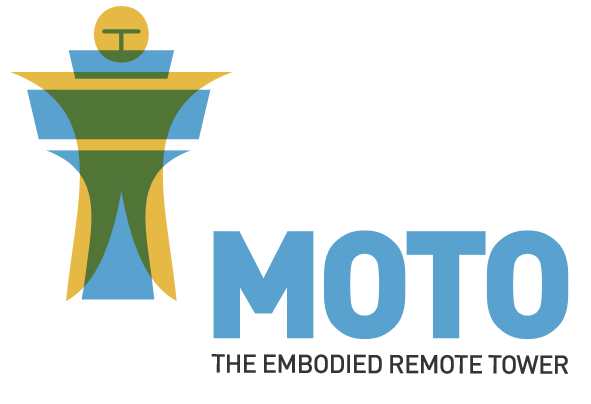 MOTO
MOTOThe embodied remote tower
Summary: ATM Human Performance research has been traditionally focused on two senses: sight and hearing. Remote tower operations make no exception, with many efforts and resources focused on acquisition of visual images, for instance by means of hi-resolution cameras (SESAR requs here). This situation is often understood by adopting traditional human information processing approaches, where human cognition is described as composed by the three phases of input acquisition-processing-action, with a clear and neat separation among them. MOTO will explore 3 research opportunities. The first one is to consider the role of all the human senses for tower operations. The approach of Embodied Cognition could be applied to achieve a full understanding on the use of other senses for controllers, i.e. one not deprived of important bodily sensations. The second one is that the Embodied Cognition approach also shows how the three phases of human cognition cannot be neatly divided, as decision-making is closely integrated with our perceptual capability and action possibilities. The embodied remote tower could potentially open up new possibilities to study (and reproduce, see point below) advanced forms of naturalistic decision-making, or attentional mechanism like the cocktail party effect. Third, the understanding of embodied aspects of ATM Human Performance is a pre-requisite to design effective multimodal input and output channels, thereby rethinking the current human-system interaction model. The end goal is to enhance human performance, by exploiting other channels than the already overloaded visual channel.
Members of DEVI: Christophe Hurter (chef de projet)
Members of ENAC: Raïlane Benhacene
Partners: Sapienza – University di Roma , Deep Blue
Duration (start date – end date): 2 ans (juin 2016 – mars 2018)
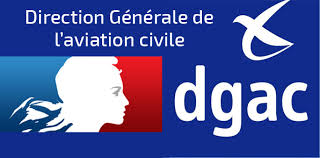 NECTAR
NECTARNouvElles ConfiguraTions Avions : élaboRation
Summary: The NECTAR (NouvElles Configurations & archiTectures Avions) project funded by the French DGAC (Direction Générale de l’Aviation Civile) and leaded by Airbus SAS aims to seek the new aircraft configurations for lower operational cost and better performances. As partner in NECTAR, ENAC is involved in the work-package 2.2 “Aircraft specification impact on operational and environmental performance”.
The role of DEVI in the project is to model the impact of the introduction of an innovative aircraft on the competitive behaviors of airlines, and the environmental consequences of the market changes. More precisely, reducing the environmental impacts while decreasing the aircraft operational cost is one of the main issue of the air transport activity. But getting substantial environmental and economic benefits with new aircraft can also require that airlines make changes in their operations. An illustration of this is the introduction on the market of the Airbus 380 whose larger size associated to a reduction in flight frequencies aimed at reducing the fuel consumption per seat-kilometer and as a consequence the carbon dioxide emissions. The expected environmental benefit is all the more important that all airlines in competition on the same routes use larger aircraft and reduce their flight frequencies.
Our objective is therefore to analyze the impact of an innovation in air transport system on airlines’ competitive strategies, when this innovation is the use of an aircraft with a significant higher capacity: the Airbus 380. Does one airline’s introduction of the A380 on a particular route lead to significant changes in capacities supplied on that route by competitive airlines? Does it give incentives to competitors to follow up the innovation, introducing itself this type of aircraft on the same route?
The role of DEVI in the project is to model the impact of the introduction of an innovative aircraft on the competitive behaviors of airlines, and the environmental consequences of the market changes. More precisely, reducing the environmental impacts while decreasing the aircraft operational cost is one of the main issue of the air transport activity. But getting substantial environmental and economic benefits with new aircraft can also require that airlines make changes in their operations. An illustration of this is the introduction on the market of the Airbus 380 whose larger size associated to a reduction in flight frequencies aimed at reducing the fuel consumption per seat-kilometer and as a consequence the carbon dioxide emissions. The expected environmental benefit is all the more important that all airlines in competition on the same routes use larger aircraft and reduce their flight frequencies.
Our objective is therefore to analyze the impact of an innovation in air transport system on airlines’ competitive strategies, when this innovation is the use of an aircraft with a significant higher capacity: the Airbus 380. Does one airline’s introduction of the A380 on a particular route lead to significant changes in capacities supplied on that route by competitive airlines? Does it give incentives to competitors to follow up the innovation, introducing itself this type of aircraft on the same route?
Members of DEVI: Chantal Roucolle
Members of ENAC: Isabelle Laplace (project manager), Cyril Allignol, Nicolas Petheil, Daniel Prun
Partners: Airbus SAS (leader project), ONERA
Duration (start date – end date): 2 years (May 2015 – June 2017)
Collaborations
As well as building close ties with interdisciplinary research programs at ENAC, the DEVI team has developed numerous collaborations (you can find a non-exhaustive list by hovering over the following domains).
 High schools and French universities
High schools and French universitiesHigh schools
ISAE
TBS
University laboratories
- IMT
- IRIT
- TSE
 Industrial partners
Industrial partnersIndustrial laboratories
- Aéroport de Blagnac
- Airbus
- ATR
- ONERA
Companies
- Safety Line
- Safran
- Thalès
 Institutions
InstitutionsEuropean
- ATRS
- EASA
- Eurocontrol
International
- IATA
 International universities
International universities- GeorgiaTech : équipe Eric Feron
- Delft
- Worms : Frank Fichert (convention ERASMUS)
- Waterloo